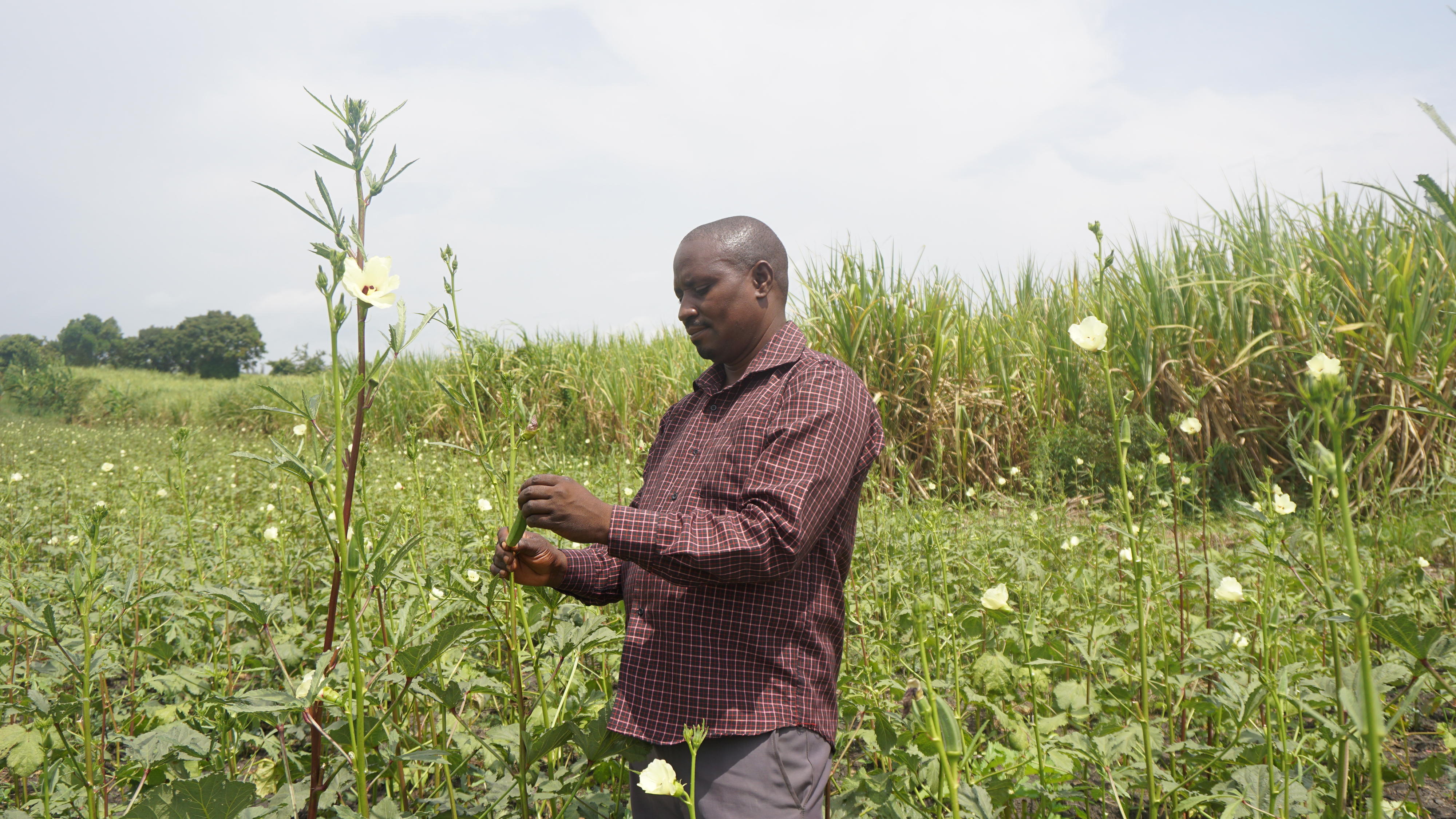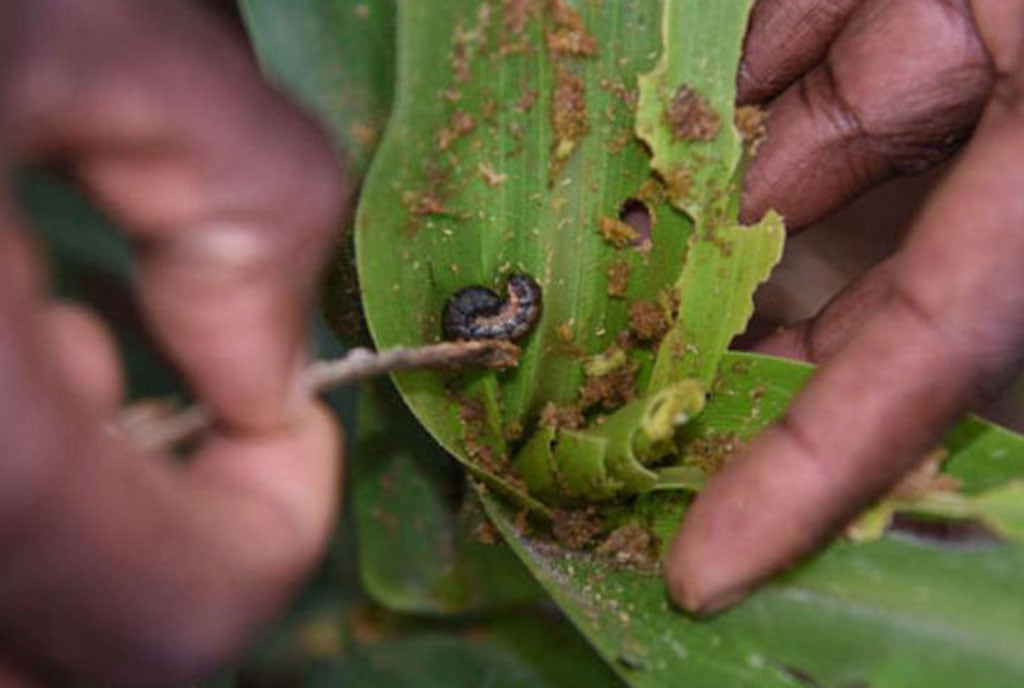Guide to grow and benefit from okra

A farmer inspects okra before harvesting. Photo / File
What you need to know:
- Okra is also a surprisingly attractive crop which is related to the hibiscus. For specific planting information, Ivan Mugumya a farmer of okra explains the proper agronomy.
Okra plant is an herbaceous plant belonging to the Malvaceae family grown for its edible seed pods. Okra plants have short straight stems that can be hairy or hairless with heart-shaped leaves.
Okra is also a surprisingly attractive crop which is related to the hibiscus. For specific planting information, Ivan Mugumya a farmer of okra explains the proper agronomy.
He says that okra is one of the major vegetable crops grown country wide. This crop is a tropical vegetable and requires a long, warm, and humid growing period.
“Okra thrives well in hot humid areas and is well suited for tropical and subtropical regions. Temperatures between 24°C and 28°C are preferred for normal growth and plant development. The seeds do not germinate below 20°C and the crop is sensitive to coldness and will not thrive when there is a continuous cold spell,” he says.
Soil requirement
Mugumya says that okra crop is adapted to a wide range of soils from sandy, loam to clay- loam. But due to its well-developed tap root system light, well-drained, loose, friable, and well-manured loamy soils are preferred.
“Okra grows well in ordinary garden soil but the plants will grow best and produce more in well-drained, fertile, and loam soil. Before planting okra seeds or transplanting, prepare the soil by mixing organic fertilisers. You can use aged manure, compost, and bagged organic fertiliser,” he says.
Mugumya adds that fertile soil is the basis of organic farming. Healthy soil with good cropping patterns, crop residue management, and crop rotation can sustain optimum production levels over the years without any loss in soil fertility. Organic farming imagines a comprehensive management approach to develop soil health, the ecosystem balance of the region, and the quality of produce.
“This also includes all agricultural systems that promote environmentally sound production of food and fibres. Then, these systems take local soil fertility as a key to successful production by respecting the natural capacity of okra plants; they aim to optimise quality in all aspects of agriculture and the environment,” he says.
Planting okra
Okra is planted individually for four to six weeks before you intend to set plants out in the garden. “While planting, you have to sow two seeds in each hole,” he says. Mugumya adds that okra prospers in full, bright sun and regular watering is required especially during flowering and pod development. During extended dry spells, a weekly deep soak is helpful. Good soil management and crop rotation help to control diseases.
Spacing
Spacing differs for different plant varieties and hybrids. The seeds must be sown on ridges 30 cm apart. The spacing between the two ridges should be maintained at 45 cm. For branching and robust types, a planting distance of about 60 cm between rows and 30 cm between plants is ideal.
He also noted that okra thrives in full sun and it is advisable to place the plant in a spot that gets five to six hours of sunlight and failure to get enough light okra plant may not produce much fruits.
“The okra plant normally produces large flowers about two months after planting. Okra pods get ready to pick up after three to four days. The fruit should be harvested in the morning and evening. However, harvesting okra can be tricky because you have to harvest the pods before they harden. Since the okra fruits do not ripen simultaneously, harvesting is done once. Frequent picking promotes fruit development and prevents pods from becoming too large,” he says.
He adds that fresh okra seeds can be easily used to grow new okra plants. However, successfully growing okra requires a little preparation.
Watering okra
Mugumya says that okra likes heat and can tolerate drought, but a farmer must maintain a regular irrigation cycle. The farmer must harvest pods when they are about two to four inches long. An inch of water per week is ideal, but if you are in a hot, dry area, use more.
“High heat can slow okra growth therefore you have to cut the tops off when they are five to six feet tall. Water the okra plant every morning to thoroughly moisten the soil, except during heavy rains. Okra can withstand drought but does much better when given plenty of water during dry period,” he says.
Diseases and pests
He adds that okra plants are also vulnerable to yellow mosaic virus, a disease transmitted by whiteflies. Plants affected by this viral disease display leaves with a yellow network of thickened veins that may be completely yellow.
“Yellowing okra plants indicate potentially devastating problems. Yellow leaves lack chlorophyll, which converts sunlight into food for the plant. As a result okra’s natural resistance to pests and diseases decreases as the plant dies,” he says. Mugumya adds that yellow coloured leaves of okra plants indicate the fact that the leaves do not have an adequate amount of chlorophyll to sustain their life and you will know that chlorophyll is a catalyst that takes incoming sunlight and converts it into a form that plants can eat. “As a result, the ability to stand strong against some plant diseases and other bacteria gradually decreases to the point where you can no longer survive. Something similar happens with okra plants,” he says.
Harvesting okra
Mugumya adds that depending upon the variety and season, the harvesting period varies between 45 and 65 days after seed sowing. The size of the pods and the stage at which they are harvested vary with the plant variety or hybrid and market preference. “The okra fruits are handpicked. Hand gloves or cloth bags are used to protect fingers. The fruits can be harvested on all alternate days and early harvesting results in low yields of tender fruits with a short shelf life. Flowering and fruiting intensity reduce in okra plants which are not regularly picked for tender pods,” he says. He adds that crop yield varies greatly depending upon the variety and season of cultivation.




